Acronis Backup Gateway With Neevcloud
Acronis Backup Gateway is a free-to-use component of Acronis Cyber Infrastructure for Acronis partners, which provides a software-defined storage solution to act as a gateway to store backups of various workloads, including variety of VMs, Servers, Workstations, and mobile devices.
Pre Requisites
Neevcloud Cloud Storage Account
Neevcloud Bucket - See our Bucket Creation Guide
Access & Secret Key Pair - See our Access Keys Guide
Acronis Cyber Protect Cloud Partner account - Acronis Partner Page
Acronis Backup Gateway (VM or Bare Metal) - Acronis Backup Gateway Guide
Acronis Agent installed on a VM or Server you wish to protect - Acronis Agent Install Guide
Note: The data restoration process is handled by your specific backup software application. As there are many potential variables that will affect your unique environment, it is strongly recommended that you seek the guidance of your backup software's technical support team in the event that you encounter difficulty, or have application-specific inquiries.
Reference Architecture

1. Install Acronis Backup Gateway & Log In
1.1 Boot a VM or Bare Metal server from the Acronis Cyber Infrastructure ISO.
Note: You can download this ISO via your Acronis Cloud Partner Portal by going to "Settings > Locations > + Add Backup Storage", then clicking "Download ISO".
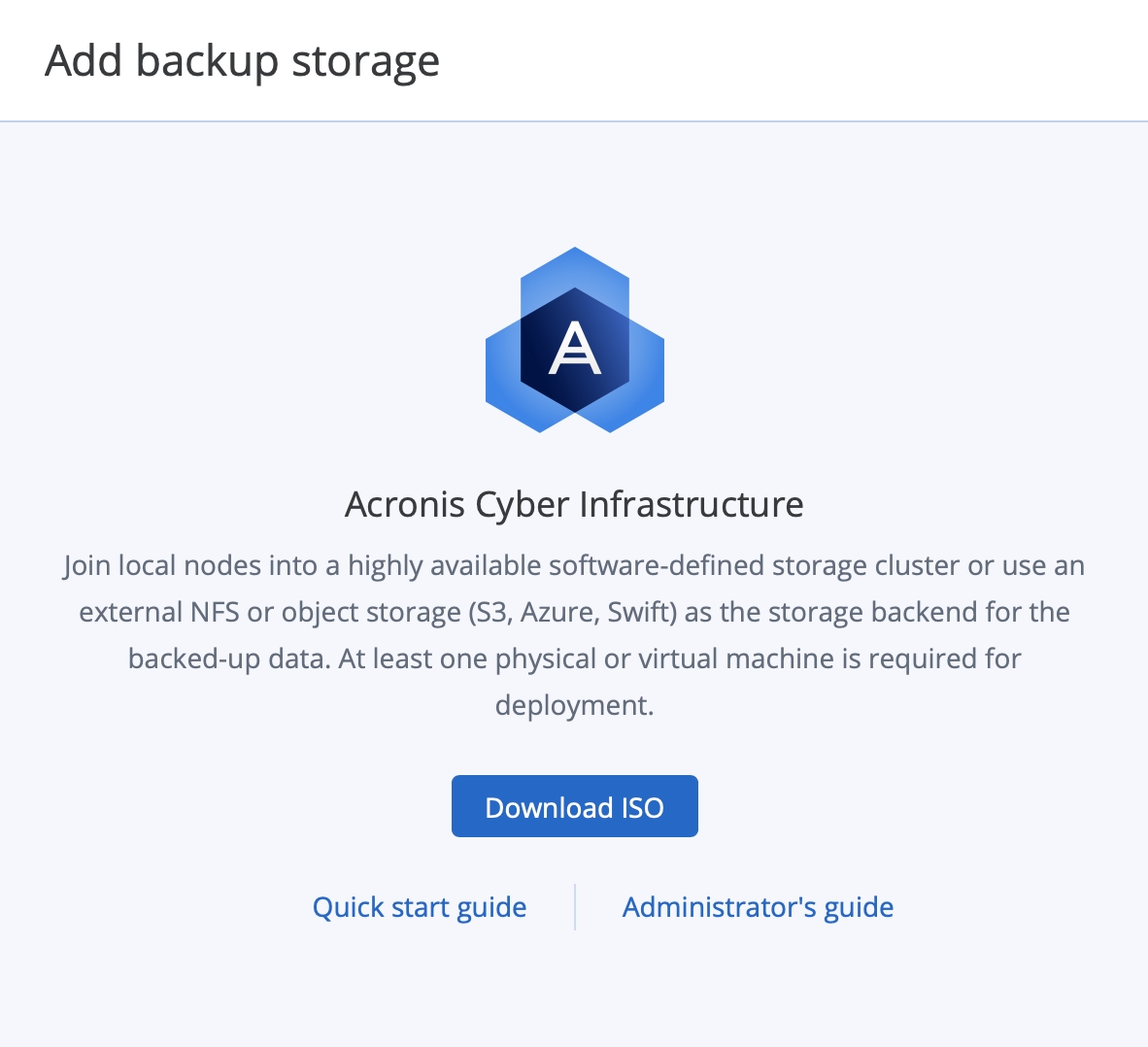
1.2 Mount the ISO to a VM, or Bare Metal server, wait for the machine to boot to the installer, and Accept the EULA, then click "Next."


1.3 Configure Network IP, Subnet, Gateway, and Host name, then click "Next".

1.4 Set the time zone, then click "Next".

1.5 Create a new cluster, by choosing "Yes, create a new cluster", then click "Next.

1.6 Create a Web Control Panel password, then click "Next".

1.7 Choose the system disk for the OS, then click "Next".
Note: For this demo, there is one system disk. For redundancy of your Backup Storage server, you may want to configure multiple disks in a RAID configuration. For specific setup questions, please be sure to reach out to your Acronis Cloud Partner representative.

1.8 Click "OK".
Note: This will format and erase the disk in preparation for installing an OS.

1.9 Create a root password for the OS, then click Start installation.
Note: This process will take some time to complete, and the machine will eventually reboot to the installed OS.

1.10 After the installation has been completed. The machine will reboot, displaying the following login screen. Take note of the address for the Admin Panel.
Note: In the example, “http://<Acronis_Panel_IP >:8888” is the address for the Web Control Panel. Your panel address will differ, depending on your network configuration.

1.11 Visit the Web Control Panel address in your browser http://<Acronis_Panel_IP >:8888 for the self-signed certificate.
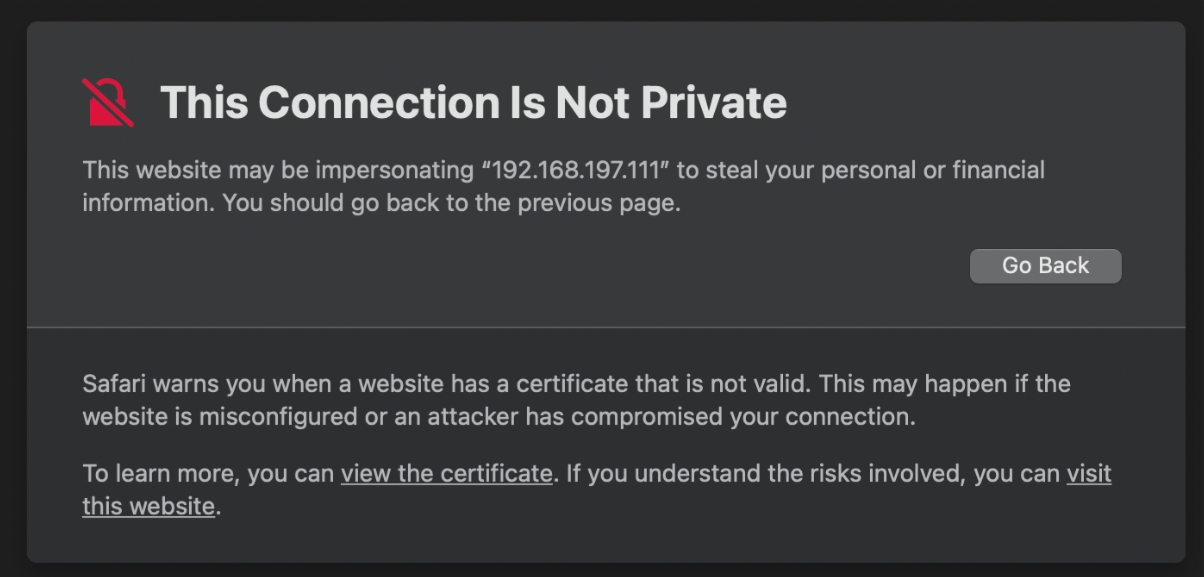
1.12 Log in with the username “admin” and the password you created for the Web Control Panel during the installation.

2. Create a Storage Cluster
2.1 Click “Infrastructure > Nodes”, then click “Create storage cluster”.

2.2 Input a name for the cluster, then click “Create”.
Note: It may take a few minutes to create the cluster.

3. Create Backup Storage
3.1 Click “Storage Services > Backup Storage”, then click “Create backup storage”.

3.2 Choose “Public Cloud”, then click “Next”.

3.3 Check the box for your storage node, then click “Next”.

3.4 Select “Wasabi” in the dropdown.
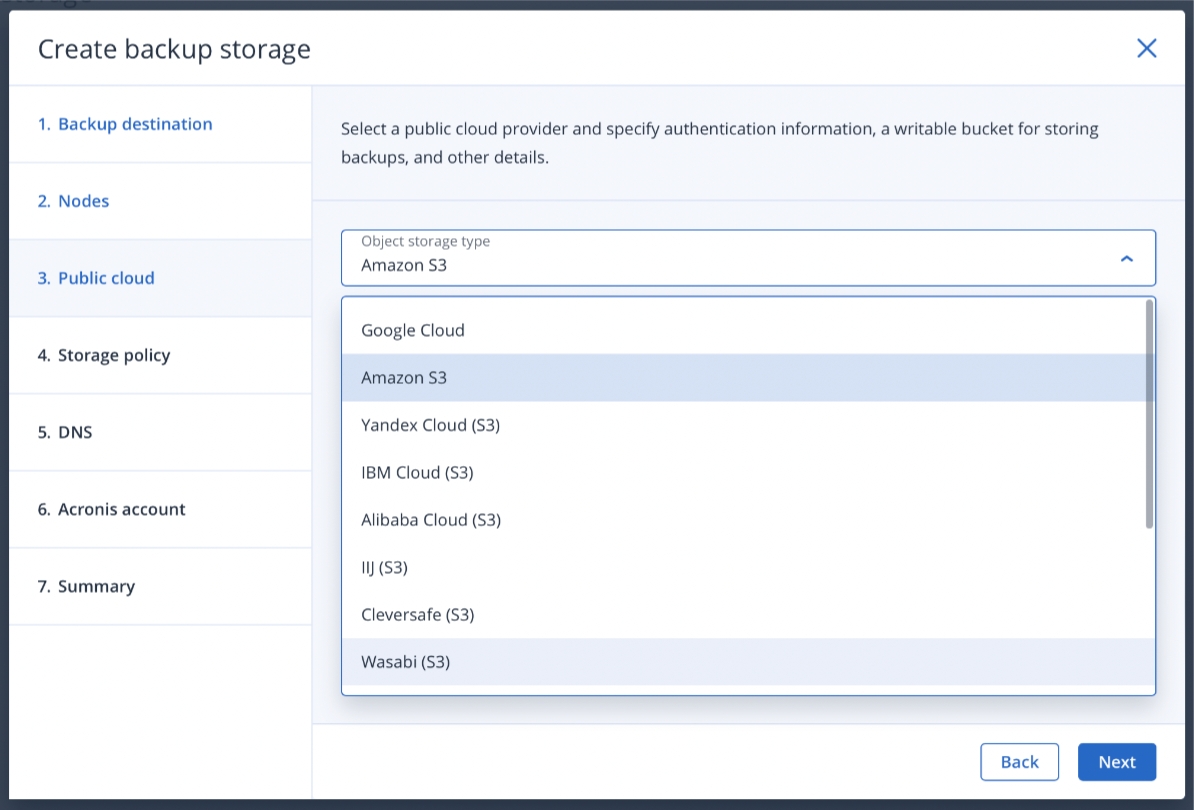
3.5 Enter the Endpoint URL, Bucket Name, Access Key, and Secret Key, then click “Next”.

3.6 Choose appropriate redundancy settings by your organization’s policies, then click “Next”.
Note: I have chosen "No Redundancy" for the sake of this example. You may wish to speak to your Acronis Representative to determine an appropriate redundancy level and hardware configuration for your Cyber Protect Infrastructure cluster.
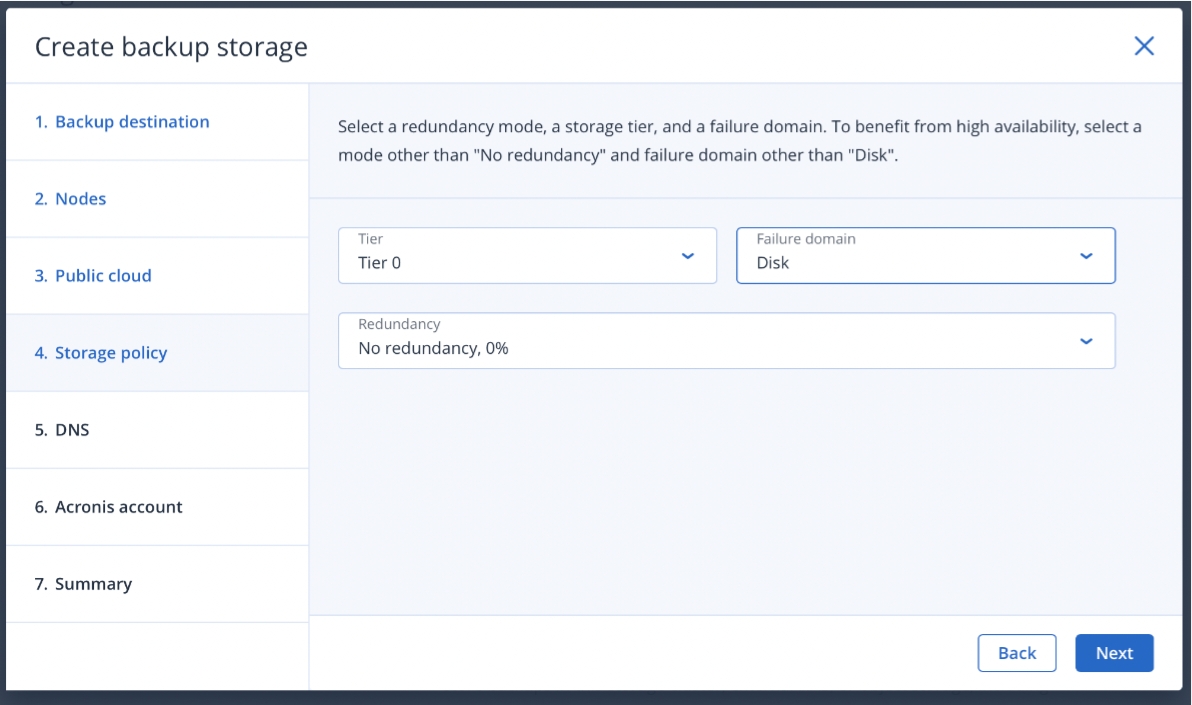
3.7 Enter a Domain Name for the backup server, then click “Next”.
Note: This must be a real DNS address, resolvable to the IP of your backup server, and the server must be able to accept inbound connections on port 44445.

3.8 Enter your Acronis Partner Credentials, to register your Cyber Protect Infrastructure, then click “Next”.
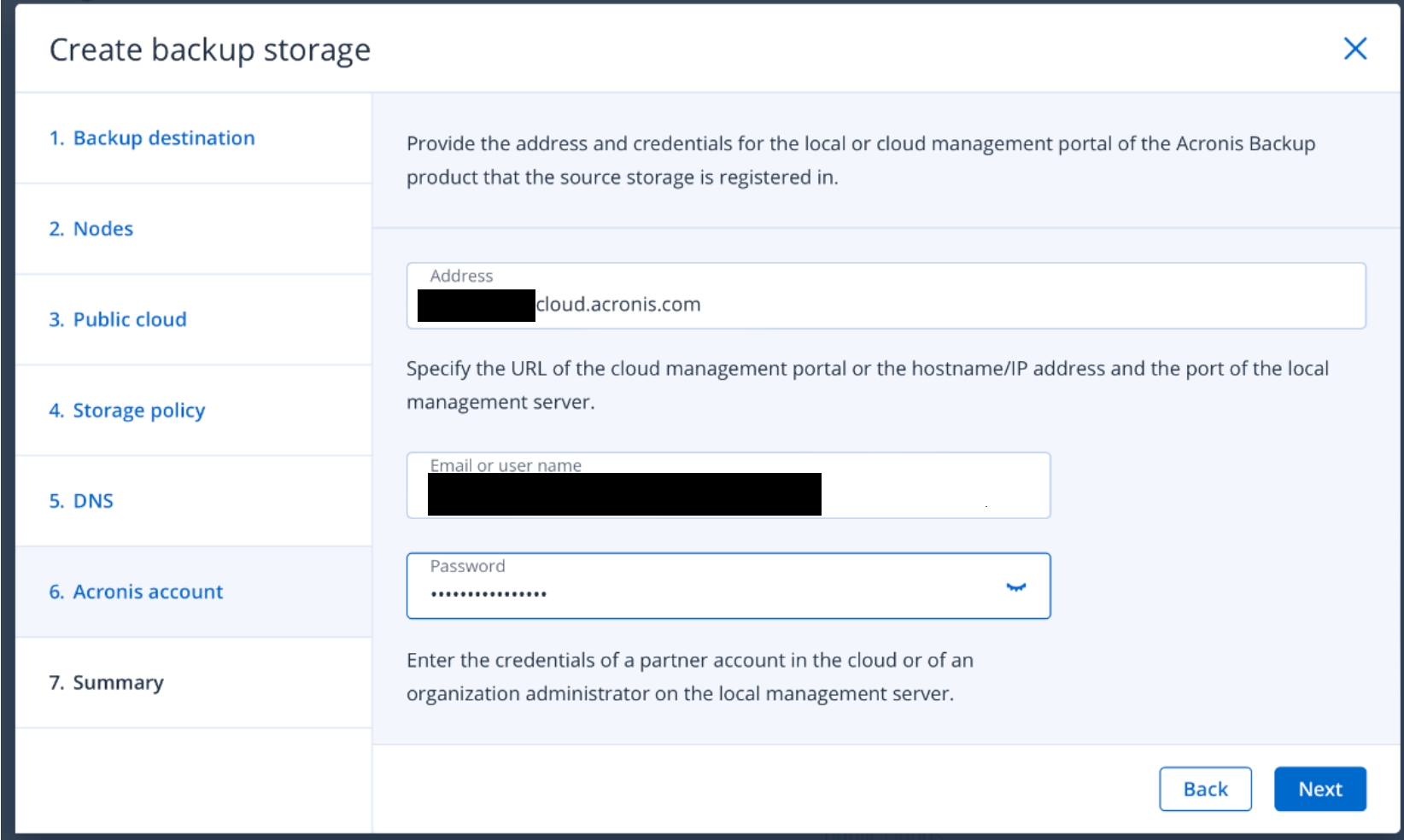
3.9 Review the “Summary”, then click “Create”.
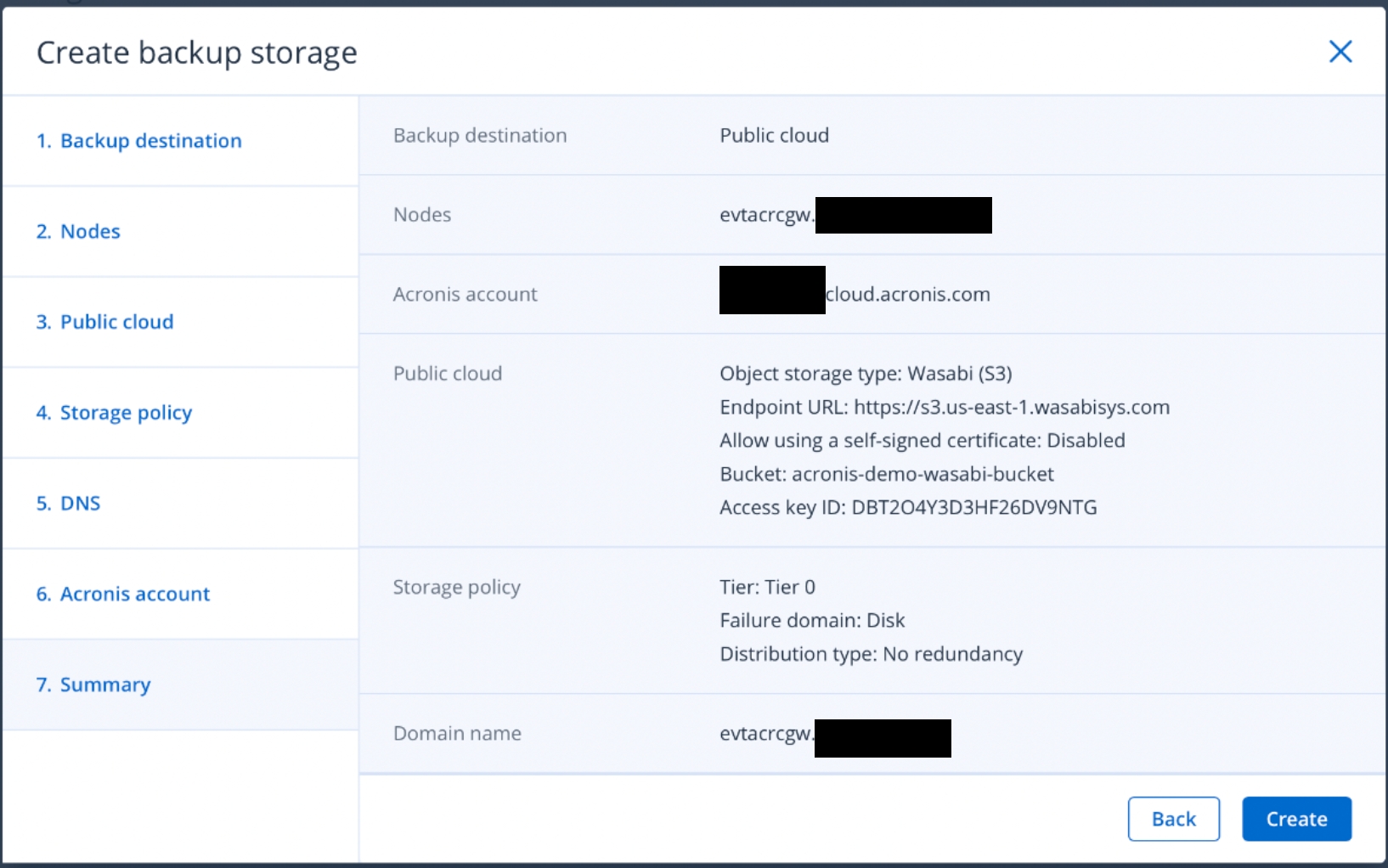
3.10 You are presented with the “Backup storage Overview" page.
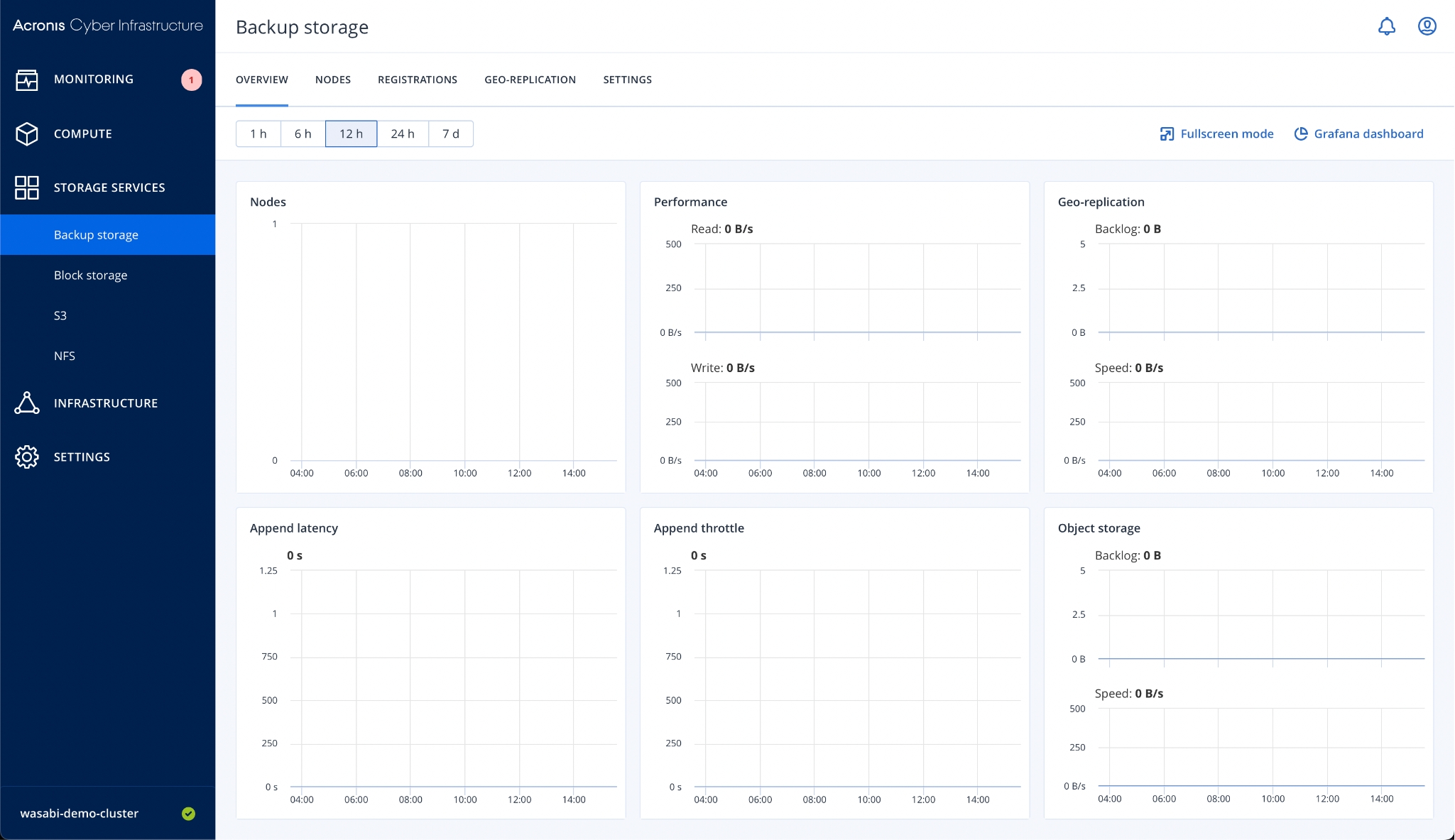
3.11 Confirm Registration by clicking the “Registration” Tab.

3.12 Log in to your Acronis Cyber Protect Cloud Partner account, and confirm that the location is available by clicking “Settings > Locations”.

4. Create an Acronis Cloud Client account
4.1 In the Acronis Cloud Partner Portal, click “Clients”, then click “+New > Customer”.

4.2 Enter Customer Details.
Note: In this example, I have set the customer to “Production”, and chosen “Managed by Service Provider”. Your specific settings may differ depending on which other Acronis services you intend to offer.

4.3 Create an Administrator, providing a username and an email address.

4.4 Select Services, then click “Next”.
Note: In this case, I have chosen the Backup Protection Service, as that will be the focus of the Neevcloud Storage Integration. If you plan on offering additional Acronis services, please be sure to discuss this with your Acronis Partner Representative.
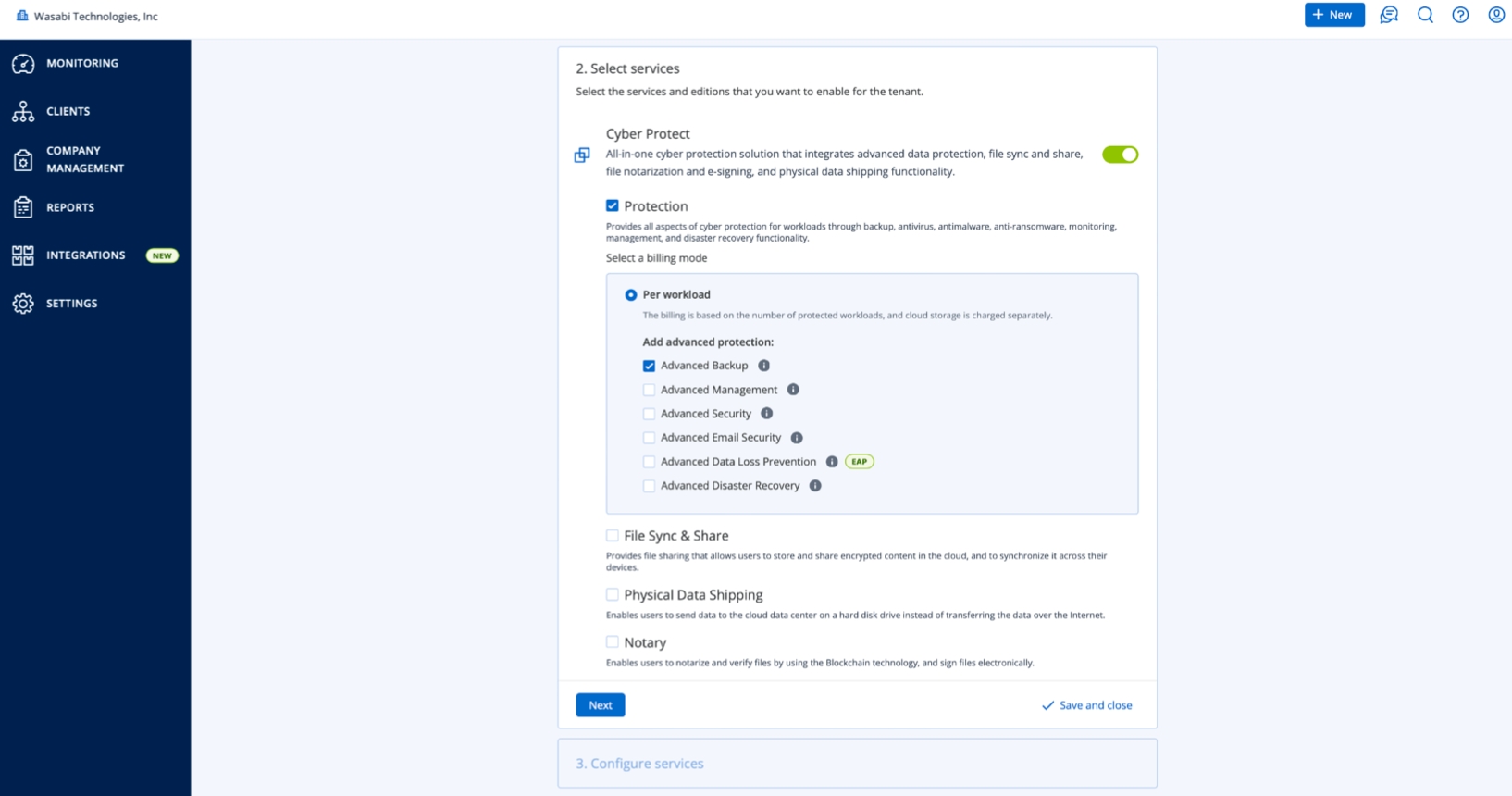
4.5 Configure Services.
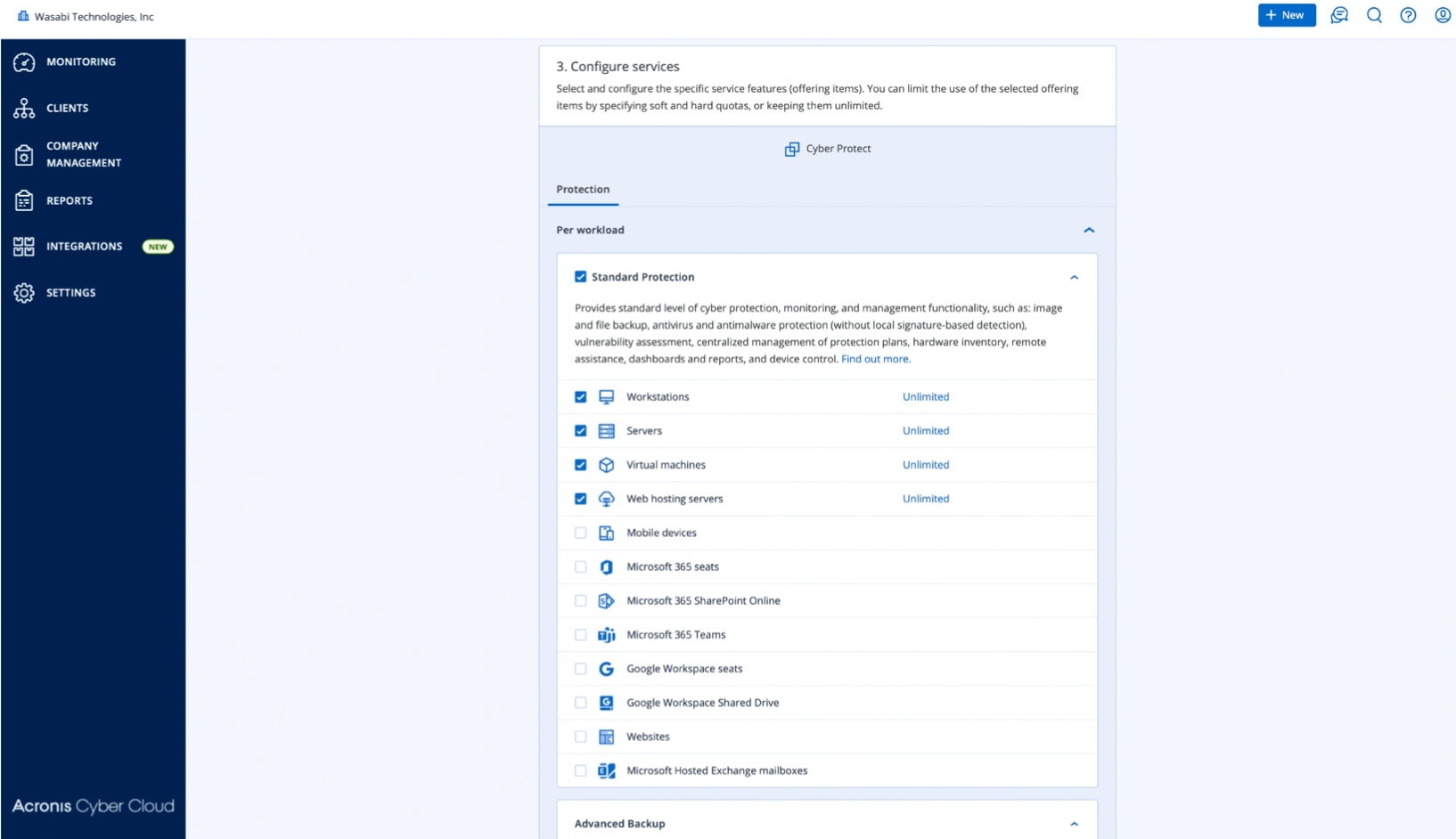
4.6 Choose the appropriate “Cloud resources” location. (the DNS address from step 3.7), then click “Done”.

5. Back Up a Machine
5.1 Click “Clients”, then click the name of the client you want to manage.
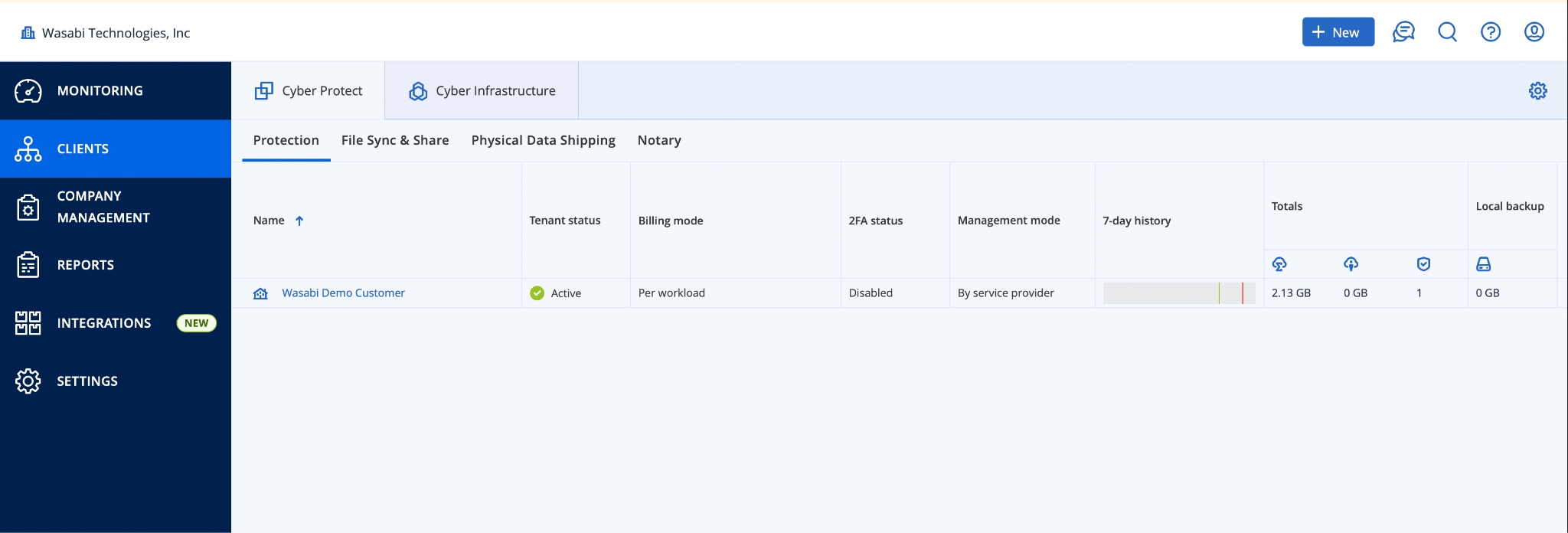
5.2 Click “Manage service”.

5.3 Click “Devices > All Devices”.

5.4 Click the name of the device, then click “Protect”.

5.5 Create a protection plan by clicking “Create plan > Protection”.

5.6 In this example we are creating a “Backup” plan, targeting “Cloud storage”. Set the appropriate settings as shown below, and then click “Create”.
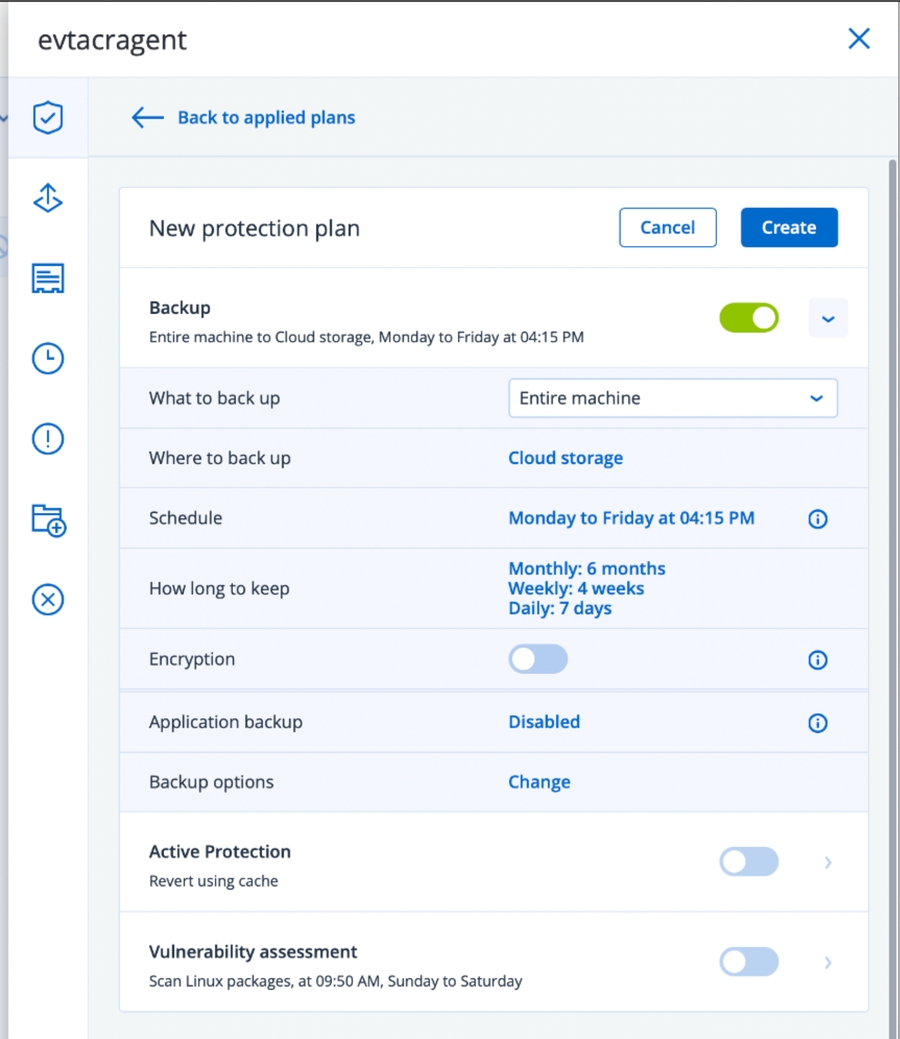

5.7 Click “Run Now”.

5.8 Check the status of the job via the “Activities” tab.
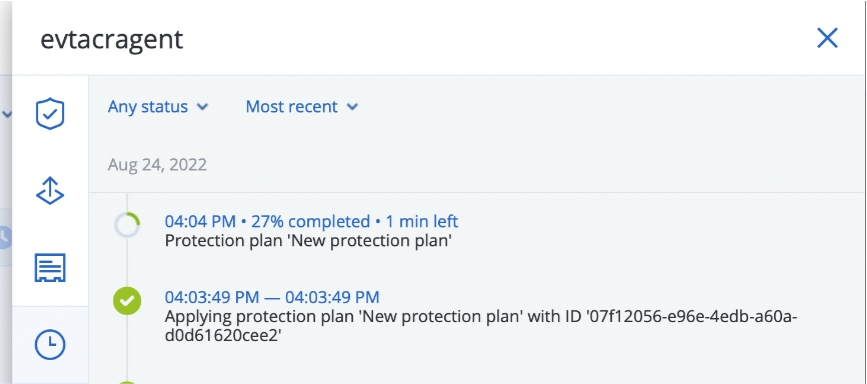
5.9 Click the running job to see more information. The job will show “Status: Succeeded” when it is completed.
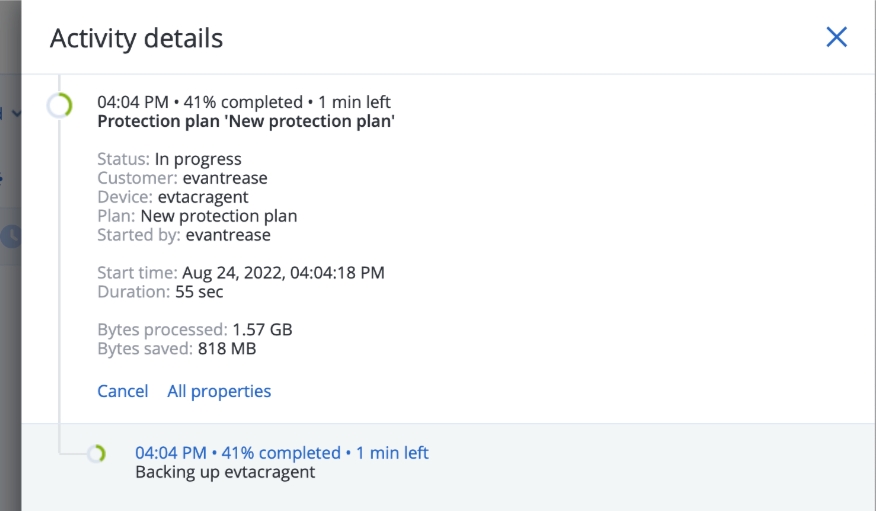
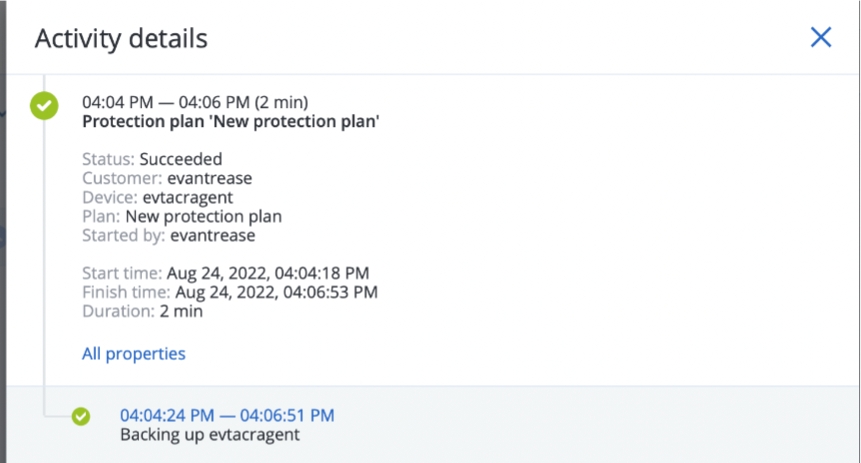
6. Verify Data
6.1 Confirm/Restore/Browse Backup Data, Click “Backup Storage > Show Backups”.

6.2 Click “Recover > Files/folders”.
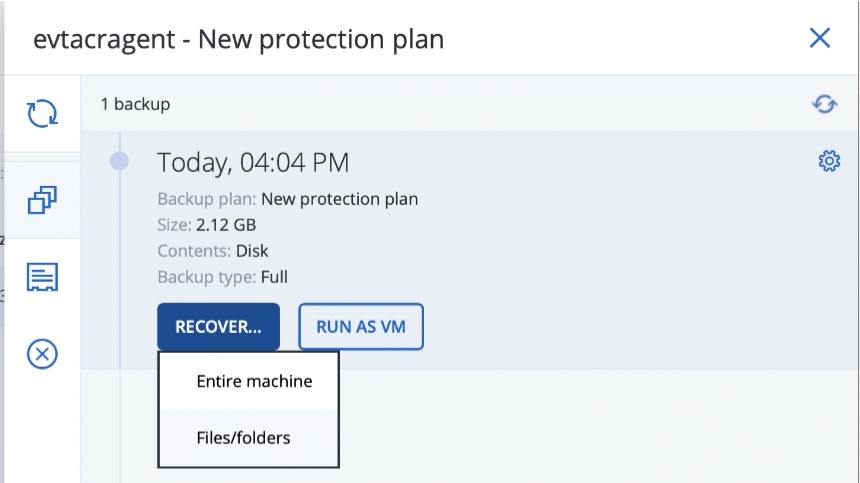
6.3 Click the partition that you would like to view.

6.4 You can now browse the directory structure, and recover/download your desired file.

6.5 You can also verify that data has been written, by drilling into the NeevCloud bucket.

Note: The data Acronis uploads to NeevCloud is in a proprietary format, split into chunks for efficient transport over the internet. You will need to use the Acronis software to browse and restore this data.
Last updated